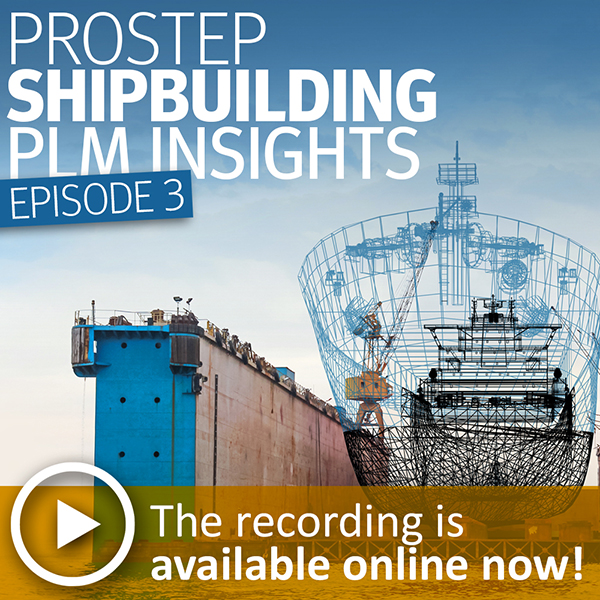
|
Downstream processes in shipbuilding require early PDM-ERP integrationBy Matthias Grau Downstream processes in shipbuilding require early and bidirectional integration between the PDM and ERP systems used in product development, production planning and production. This was one of the key messages of the third episode of our PROSTEP SHIPBUILDING PLM INSIGHTS webinar series, in which we presented different PDM-ERP integration scenarios to participants. Product development and realization requirements differ in all industries, which is why companies generally use different IT systems to manage product structures, 3D models, drawings, etc., and material data, routings and manufacturing bills of material. Shipyards are no exception. However, they have special requirements for the adaptability of PDM-ERP integrations because manufacturing processes vary from shipyard to shipyard and sometimes from site to site. In addition, many shipyards use homegrown ERP systems because commercial solutions did not initially cover all their needs. The main challenge in PDM-ERP integration in shipbuilding is to synchronize the different structures of engineering and manufacturing BOM (Bill of Material) in parallel and bidirectionally, as PLM Consultant Nils Sonnenberg said. He explained the different integration requirements to participants, using the example of purchased and in-house manufactured parts. "We need the development data early in the ERP system to use it for supplier communication, for example, and to better estimate delivery times." Design options for parts manufactured in-house would also need to be regularly checked against the master record in the ERP system to ensure that the user is only using approved parts. How shipyards should handle the challenge of needing multiple MBOMs for different locations was one of the interesting questions in the webinar's closing Q&A session. In other industries, companies use the option of creating a generic MBOM already in the PDM system and only then transferring it to the sites' ERP systems, Sonnenberg said. But there can be no general answer to the question because it depends, among other things, on whether the company in question has the MBOMs created at the sites on site or at a central location. On the other hand, the question posed by another participant as to what the ideal combination of PDM and ERP systems for shipbuilding is, and whether shipyards and their design partners should use the same systems, could be answered clearly: There is no such thing as the ideal combination. More important than the question of which systems to use is how to integrate them so that collaboration works. Thanks to powerful integration platforms, this is no longer a technical problem. Helping companies integrate their heterogeneous IT system landscapes is one of our core competencies. In total, more than 50 interested parties attended the two live presentations on PDM-ERP integration. If you missed the third episode of the webinar, you can watch the recording here. In the fourth episode, at the request of the participants, we will hold a demo session about episode 1-3 topics. We will inform you about the date and agenda in time if you register right here. 
|
|
| © PROSTEP AG | ALL RIGHTS RESERVED | IMPRINT | PRIVACY STATEMENT | YOU CAN UNSUBSCRIBE TO THE NEWSLETTER HERE. |

